DIY
Upcycling 101: Why is Upcycling Good for the Environment?
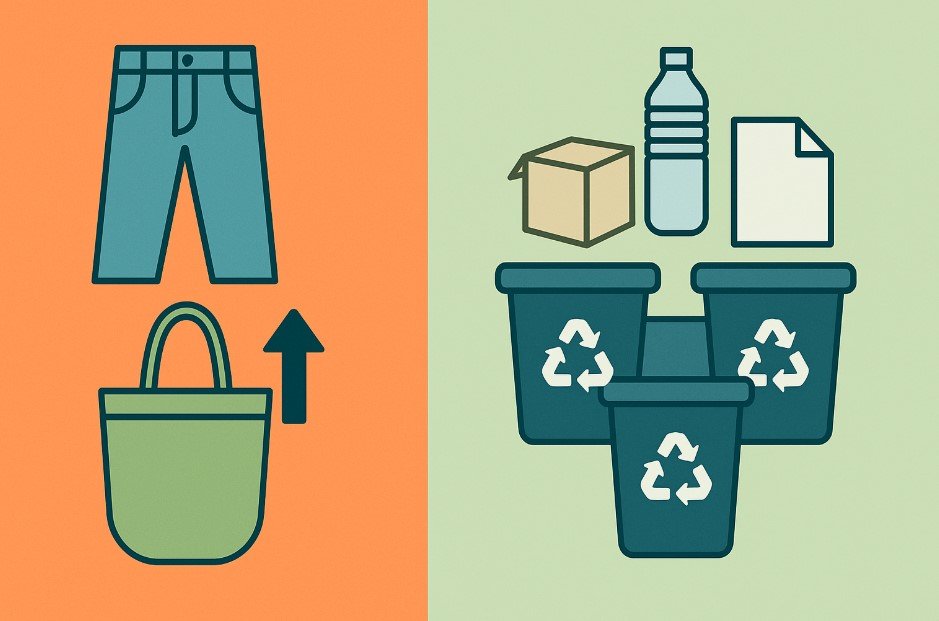
Upcycling has gained popularity in recent years as people become more aware of environmental issues and look for creative, practical solutions. Unlike recycling, which breaks down materials to create new products, upcycling transforms old or discarded items into something useful or beautiful without breaking them down entirely. This process reduces waste, saves resources, and promotes a more sustainable lifestyle. In this article, we’ll explore what upcycling is, why it’s good for the environment, the types of materials used, and how it helps communities and the planet.
What is Upcycling?
Upcycling is the process of taking used, old, or unwanted materials and converting them into new products of higher quality or value. It encourages people to look at waste differently—not as garbage, but as a resource. This method is not just about fixing or repairing things. It’s about reimagining them and giving them new life.
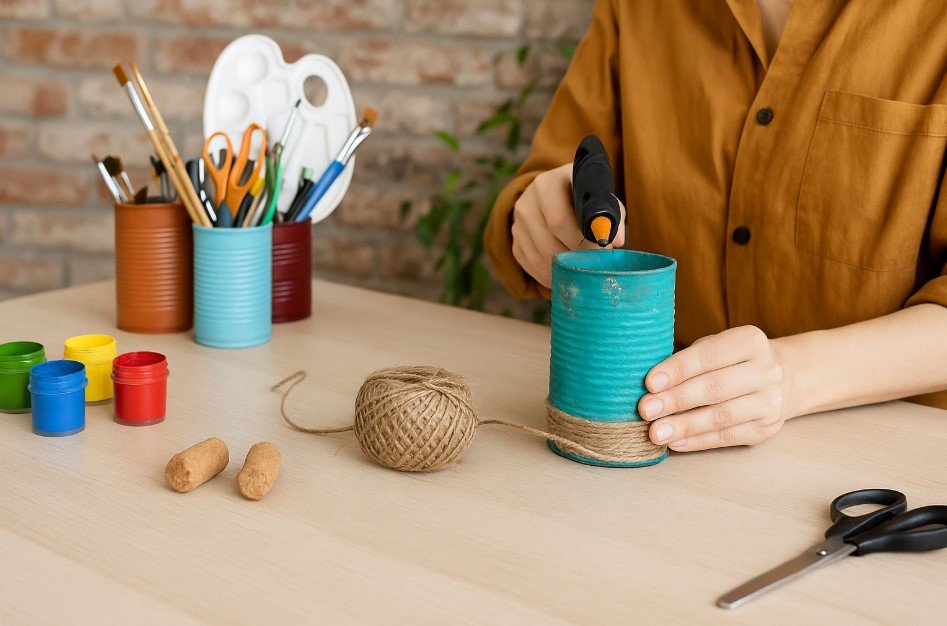
For example, turning wooden pallets into bookshelves or using glass jars as plant pots are simple upcycling ideas. Artists may turn scrap metal into sculptures, and fashion designers might create stylish clothing from discarded fabrics. The idea is to reduce waste while making something practical or visually appealing.
Why is Upcycling Important?
Upcycling is important for several reasons. It helps reduce the amount of waste going into landfills, cuts down on the demand for new raw materials, and lowers greenhouse gas emissions that result from traditional manufacturing. It also supports a more circular economy, where resources are kept in use for as long as possible.
The process also raises awareness about overconsumption and fast fashion, where items are quickly made, used, and thrown away. By upcycling, people can make more thoughtful choices and contribute to a healthier planet.
Environmental Benefits of Upcycling
- Reduces Landfill Waste
One of the biggest advantages of upcycling is waste reduction. Every time someone repurposes an item instead of throwing it away, it keeps that object out of a landfill. This helps to decrease the strain on waste management systems and reduces environmental pollution. - Conserves Natural Resources
Manufacturing new products often requires a lot of energy and raw materials. Upcycling limits the need for new resources like water, wood, and fossil fuels. For example, creating a new cotton shirt from scratch uses hundreds of gallons of water, while making one from reused fabric requires almost none. - Cuts Down Energy Use
Producing new goods from raw materials consumes significant energy, often from non-renewable sources. Upcycling skips many of the energy-intensive steps of production, making it a more efficient and eco-friendly option. - Lowers Greenhouse Gas Emissions
By reducing the need for new production and limiting waste, upcycling also cuts down on the carbon footprint. This can play a small but meaningful role in fighting climate change. - Raises Awareness and Encourages Action
Upcycling can also inspire others to think more sustainably. Whether it’s through DIY tutorials or art installations made from reused materials, the movement spreads the message that everyone can contribute to environmental protection.
Common Materials Used in Upcycling Art
Many artists and DIY enthusiasts are using everyday materials to create upcycled art. Some of the most common materials include:
- Plastic bottles
- Glass jars
- Old magazines and newspapers
- Wood scraps and pallets
- Fabric from clothes or curtains
- Metal cans and lids
- Broken jewelry and buttons
- Cardboard boxes
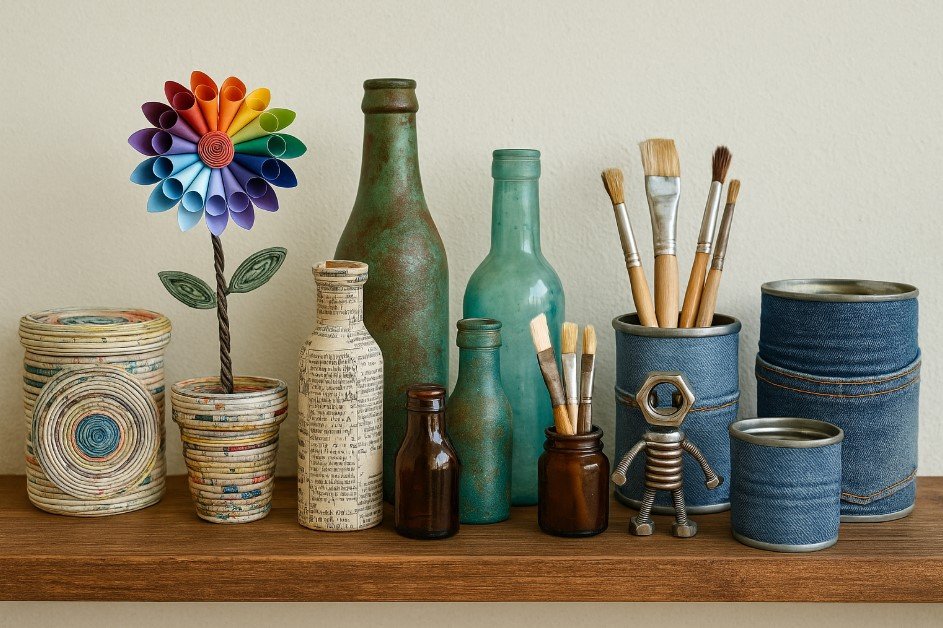
These materials are often thrown away without a second thought. However, they can become useful or decorative pieces with a little creativity and effort.
Upcycled art is not only a form of self-expression but also a statement about consumption and sustainability. It shows how even discarded objects can have value.
What is the Goal of Upcycling?
The goal of upcycling is to reduce waste and pollution by reusing materials in a way that increases their value. Unlike recycling, which can sometimes degrade material quality, upcycling adds value to existing items. It encourages people to consume less, make use of what they already have, and rethink their relationship with everyday objects.
On a deeper level, upcycling promotes sustainability and challenges the throwaway culture. It turns people into problem solvers who see opportunity in what others may consider trash.
Practical Examples of Upcycling
Upcycling doesn’t require special tools or professional skills. With a little imagination, anyone can do it. Here are some everyday examples:
- Clothing: Turning old jeans into a handbag or using fabric scraps to make patchwork quilts
- Furniture: Repainting and reusing an old dresser or turning crates into a coffee table
- Home décor: Creating wall art from bottle caps or using mason jars as candle holders
- Garden projects: Using old tires as plant pots or building a compost bin from wooden pallets
These ideas not only reduce waste but also save money and add personal charm to homes.
Upcycling in Education and Community Projects
Schools and community centres are also embracing upcycling as a way to teach sustainability. Many craft and art projects now use upcycled materials to encourage kids and adults to think about waste differently. These projects help build teamwork, creativity, and problem-solving skills.
Community clean-ups that include upcycling initiatives help people see the direct benefits of reuse. Items found in clean-ups can be cleaned, transformed, and displayed in public spaces, turning a local problem into a positive experience.
What Does Upcycling Focus on Creating?
Upcycling focuses on creating functional or artistic items from waste. These creations can range from everyday tools to decorative objects or even public installations. The key is that the item is transformed into something of better quality or higher value without using too many new resources.
Whether it’s furniture, fashion, or fine art, the goal is to extend the lifespan of materials and give them a second life with a new purpose.
Why is Upcycling Considered Sustainable?
Sustainability means using resources in a way that does not harm the environment or limit their availability for future generations. Upcycling fits this idea well because it uses items that already exist instead of creating demand for new ones. It reduces waste, saves energy, and encourages responsible consumption.
By extending the life of existing materials, upcycling helps reduce the need for mining, manufacturing, and transporting new goods—all of which have environmental costs. Because it cuts down on emissions, pollution, and landfill growth, upcycling is considered a smart and sustainable solution for reducing human impact on the planet.
It also supports social sustainability. Local artists, small businesses, and DIY creators can benefit from upcycling as a low-cost way to build and sell products. This helps communities grow stronger while reducing environmental harm.
Upcycling vs. Recycling: What’s the Difference?

| Feature | Upcycling | Recycling |
| Definition | Repurposing old items into something of higher value | Breaking down materials to create new products |
| Process | Does not destroy the original item | Breaks down materials into raw form |
| Energy Use | Low | Higher (involves processing) |
| Environmental Impact | Very low; minimal emissions | Moderate; can involve pollution |
| Final Product Quality | Often improved or maintained | Sometimes lower than the original |
| Examples | Turning jeans into a bag, using jars as vases | Melting plastic bottles to make new containers |
| Skills Needed | Basic DIY or artistic creativity | Industrial process, not DIY-friendly |
| Cost | Usually low | Can be costly due to processing |
| Sustainability | High – prolongs life of items | Medium – helps reduce raw material use |
Many people confuse upcycling with recycling. While they both aim to reduce waste, there are key differences:
Recycling usually involves breaking down materials like plastic, glass, or metal into raw form so they can be reused. This process often requires energy and may weaken the material’s quality over time.
Upcycling, on the other hand, repurposes items without breaking them down. Instead of reducing the item to its base form, upcycling finds a new use for the original object as-is or with small changes.
For example, recycling a plastic bottle means melting it down and turning it into something new, like fabric. Upcycling that same bottle might mean cutting it into a scoop or turning it into a flower pot. Both methods are useful, but upcycling generally requires fewer resources.
Popular Upcycling Projects
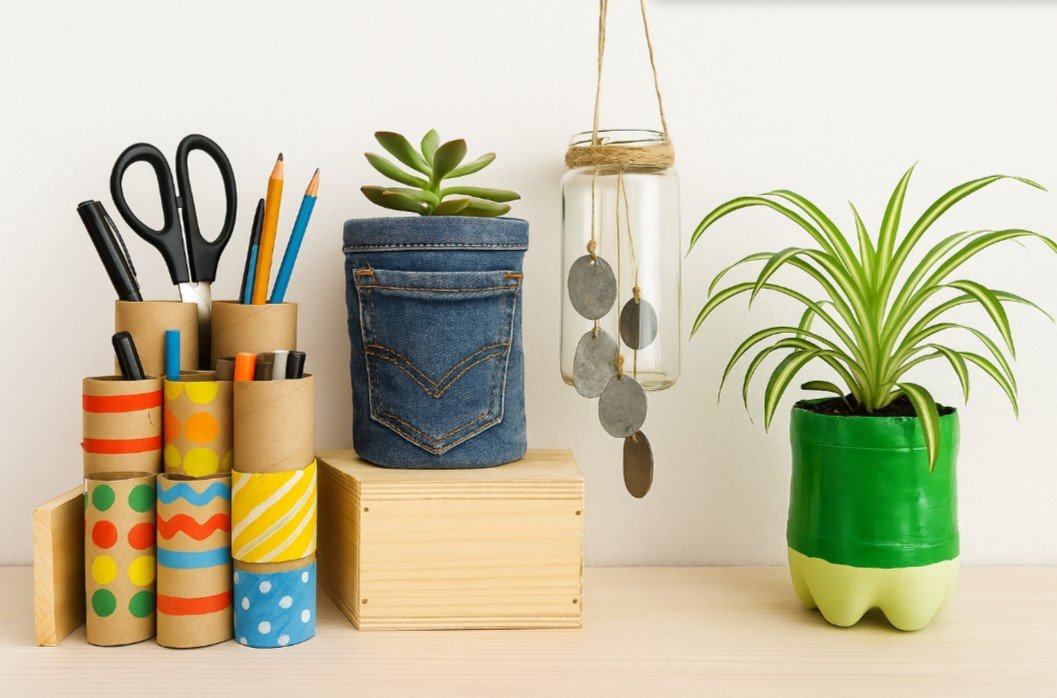
Upcycling has become a trend in various areas, including home décor, clothing, furniture, and even technology. Below are some popular categories:
-
Furniture Upcycling
One of the most common forms is restoring old or damaged furniture. A scratched table can be sanded and painted. An old chair might be given a new cushion. People often find used furniture at thrift stores or even on the street and turn it into beautiful, functional items.
-
Fashion Upcycling
The fashion industry produces a lot of waste. Upcycling clothes helps fight this by turning outdated or worn-out garments into stylish, custom pieces. Old T-shirts can become bags. Worn jeans can be transformed into shorts. Scarves and belts can be made from leftover fabric.
-
Technology and Electronics
Some tech-savvy creators are upcycling old electronics. For example, outdated laptops can be converted into digital picture frames. Broken radios may be turned into storage boxes or even lamps. These projects require more skill, but they help reduce electronic waste.
-
Packaging and Containers
Boxes, bottles, and jars are easy to upcycle. Glass jars can be used to store spices or as planters. Cardboard boxes can become organizers or art projects. Even tin cans can be turned into pencil holders or lanterns.
Getting Started with Upcycling
If you’re new to upcycling, here are a few simple tips to help you begin:
- Start small: Try an easy project like reusing glass jars or revamping an old T-shirt.
- Use what you have: Look around your home for items that can be reused or repurposed.
- Gather basic tools: Scissors, glue, paint, and fabric are often all you need to start.
- Get inspiration online: Platforms like Pinterest and YouTube have thousands of DIY upcycling tutorials.
- Think creatively: Ask yourself how something can be used differently, not just how it looks now.
Over time, you’ll build skills and gain confidence. Upcycling is not about being perfect—it’s about making an effort to use resources more wisely.
Upcycling in Business and Industry
Larger companies are also starting to embrace upcycling. Some fashion brands now sell collections made from leftover materials. Furniture designers are reusing reclaimed wood. Even food companies are using waste products like fruit peels to make new goods such as snacks or cosmetics.
These changes show that upcycling is more than a personal hobby—it’s becoming part of modern business and design. Brands that support upcycling show customers that they care about the environment and want to reduce waste.
Governments and cities also support upcycling by offering workshops, recycling centres, and grants for creative reuse programs. These efforts make it easier for people and businesses to take part in sustainable practices.
Challenges of Upcycling
Although upcycling has many benefits, it is not without its challenges:
- Time and effort: Some projects require skills or tools that beginners might not have.
- Access to materials: Not everyone has easy access to items that are safe or useful to upcycle.
- Quality issues: The end result depends on the condition of the original item and the person’s skill level.
- Limited scale: Upcycling is most effective on a small or community level. Large-scale waste reduction needs government and industry support too.
Still, these challenges can be managed with education, awareness, and collaboration.
How You Can Help
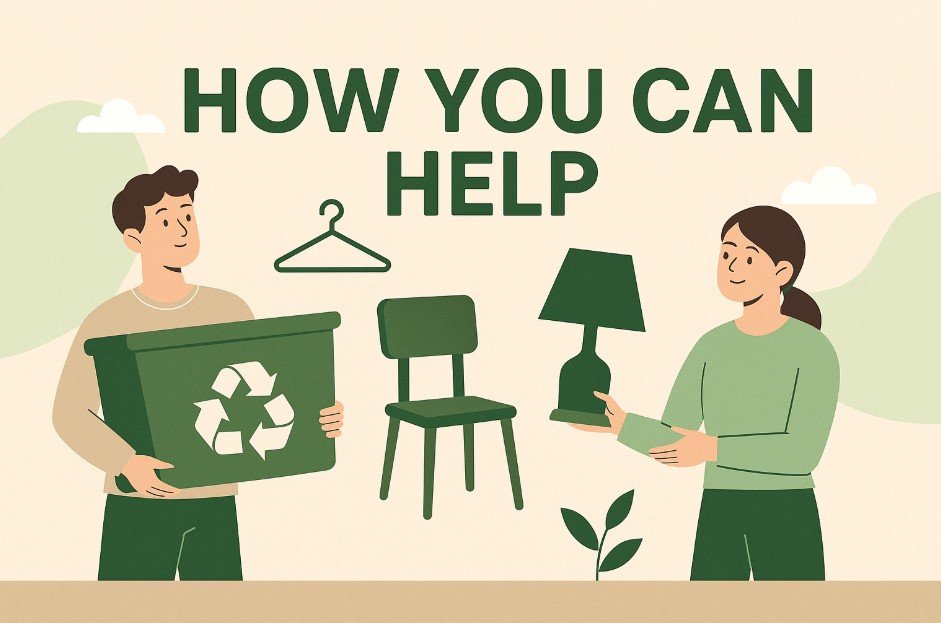
Anyone can take part in upcycling. Here’s how you can make a difference:
- Reuse items before throwing them away
- Support businesses and artists who sell upcycled goods
- Share your projects to inspire others
- Teach kids and friends about the benefits of upcycling
- Join or create local events focused on reuse and sustainability
Small actions can lead to big results when enough people get involved.
Final Thoughts
Upcycling is a powerful way to reduce waste, protect natural resources, and support a more sustainable future. It encourages people to see potential in everyday items, turning them into something useful or creative. From DIY projects at home to large-scale art installations and product design, upcycling shows us that waste doesn’t have to be the end of the story.
Whether you’re repurposing old clothes, turning a broken chair into a new piece of furniture, or using jars as storage, every effort helps. Upcycling is more than a trend—it’s a mindful and meaningful way to live.
By understanding what upcycling focuses on, creating and learning why upcycling is considered sustainable, we take steps toward a greener, less wasteful world.
Now is the time to look at the things around you and ask: Can this be upcycled?
-

 Self Improvement2 months ago
Self Improvement2 months agoUsing BCBS Rehab to Access Quality Addiction Care
-

 Games2 months ago
Games2 months agoPusoy Strategies for Play That Also Work in Pusoy Dos in English
-

 Law2 months ago
Law2 months agoHow Can a Car Accident Attorney Help You?
-

 News2 months ago
News2 months agoCreating Acoustic Comfort in Restaurants: The Overlooked Ingredient of a Perfect Dining Experience






